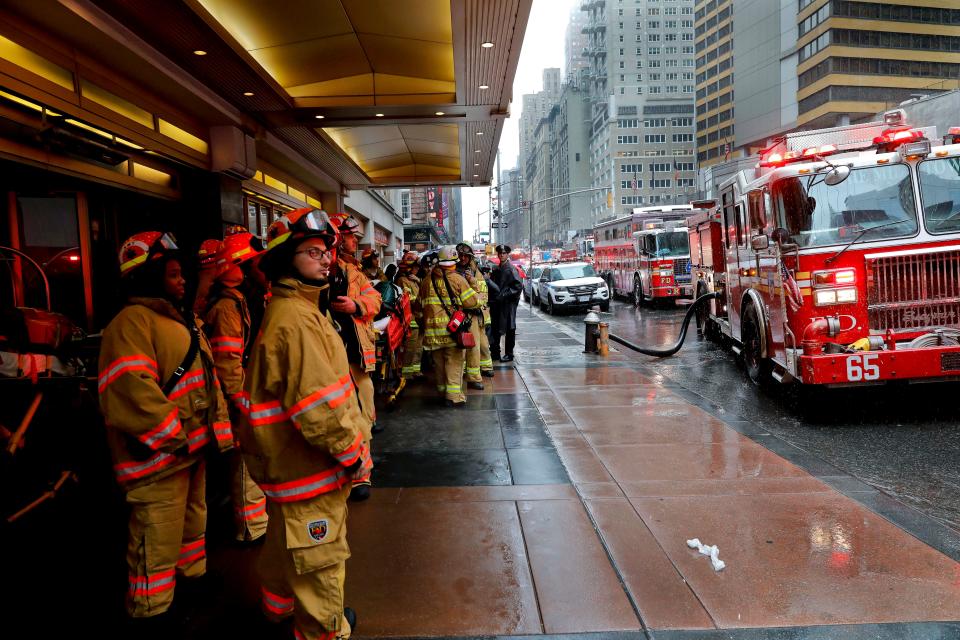New York chopper crash: Pilot's rating questioned amid questions over flight rules
The veteran pilot killed when the helicopter he was flying crashed atop a New York skyscraper lacked an instrument flight rating, required when flying through heavy fog and rain, and apparently became lost.
Though no one else was killed or injured, the crash on the midtown Manhattan high-rise raises the issue again about flight rules over New York, still jittery almost 18 years after the 9/11 terrorist attacks. These days, those concerns over the rules are heightened due to the Trump Tower, the office and residential high-rise, which has had a flight restriction around it since Donald Trump was elected president in November 2016.
More: New York City chopper crash: Here's what happened
"If you're going to have those helicopters, especially over sensitive areas, should we be looking at additional restrictions?" asked Jim Hall, former chairman of the National Transportation Safety Board, the government's aviation accident investigation arm. "When things happen, you need to look at your risk assessment and need to adjust it."
It was quickly determined that terrorism played no role in Monday's crash. Rather, the pilot radioed controllers to say he was lost and was trying to find his way back to the helipad, which had become obsured by fog and rain, the Associated Press reported.

The pilot, Timothy McCormack of Clinton Corners, New York, was alone in the craft. he held a commercial pilots license for helicopters and was qualified as an instructor, documents show. But his lack of an instrument flight rating, which allows a helicopter to be flown by monitoring instruments along with air-traffic control instructions, instead of flying by sight, could have made a difference.
But with the NTSB picking up the investigation, the probe is sure to include McCormack's decision to depart in what were clearly inclement conditions.
"The decision to lift off in the first place is the first thing to be questioned," said Mike Isler, a helicopter pilot and aerial film producer based at the airport in Linden, New Jersey.
McCormack was flying an eight-seat Agusta A109E helicopter as dense fog hung over Manhattan. Generally, in such conditions, pilots would file an instrument flight plan then be in contact with air traffic controllers. But it's a judgment call when it comes to weather: Helicopters that stay below 1,100 feet, as McCormack was doing, over the rivers are not required to be in contact with controllers, the FAA says.
Because of that, the decision to take off would have been McCormack's, who had 15 years of flying experience.
McCormack took off from the 34th Street heliport, apparently bound for Linden, about 20 miles away. He crashed on the 787 Seventh Avenue building 11 minutes later. The crash shortly before 2 p.m. EST sparked a fire, major emergency response and elicited worry in the streets around the 51-story tower.
More: Witness felt building shake as helicopter crashed
Now pilots fear the call for new flight restrictions over Manhattan.
"We all cringe because it brings a lot of unwanted attention over New York City," Isler said. That, he added, would "impact our livelihoods."
Contributing: Rodrigo Torrejon, The (Bergen County, New Jersey) Record
This article originally appeared on USA TODAY: New York chopper crash: Pilot's rating questioned amid questions over flight rules

